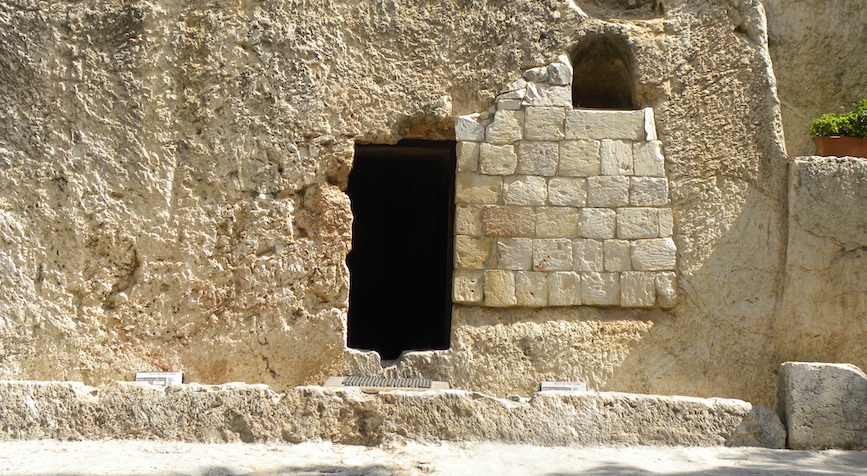What was Jesus’ connection with Jerusalem?
Even today we can follow the footsteps of Jesus in Jerusalem. Many places in the city testify to His being there. Jerusalem is holy to Christians. But what does the New Testament say about Jesus and Jerusalem? Follow the footsteps of Jesus the Jew in Jewish Jerusalem.
Dr. G.H. Cohen Stuart
(From 1982 till 1994 theological advisor to the Netherlands Reformed Church in Jerusalem. Since 1994 a licensed tour guide in Israel).
Christians have been coming as pilgrims to Jerusalem since the 4th century, thus following in the footsteps of empress Helena. She was the mother of Constantine the Great, the emperor who, during his reign (324-337), established Christianity as the state religion of the Roman Empire. On the basis of visions and information she received during her pilgrimage, she determined which were the most important holy places with reference to the life of the Lord Jesus Christ. With a few exceptions these are to be found in Jerusalem. She decided where the Church of the Resurrection (the Church of the Holy Sepulchre) was to be built. She determined where Golgotha (the Place of the Skull, Mount Calvary) lay. She pointed out where the Church of the Ascension was to be founded, on the Mount of Olives.
The Lord’s prayer
Other sites were added to these initial holy places over the centuries. We limit ourselves in this article to those places that are connected to the life and works of Jesus in Jerusalem. The half finished Pater Noster Church is situated on the Mount of Olives. This is where Jesus is supposed to have taught the disciples the Lord’s Prayer. The text of the Lord’s Prayer is reproduced in many languages on the walls. The splendid Dominus Flevit chapel is on the slope of the Mount of Olives, at the spot where Jesus is reputed to have wept over Jerusalem on His way into the city. The Church of All Nations is at the foot of the Mount of Olives. Tradition claims that it was here that Jesus prayed in great agony and was arrested by Caiaphas’ men, at Judas’ bidding. Many see the garden, with its very ancient olive trees, as an impressive spot for meditation.
Christ’s suffering
Within the walls of the Old City are not only the Church of the Holy Sepulchre, but also other chapels, churches, monasteries and convents to be found at the fourteen so-called “stations” of the Via Dolorosa. Each of these fourteen places points to one of the fourteen (partly legendary) events and encounters on Jesus’ route from His condemnation by Pilate to His burial. The ruins of the Church of Bethesda, in the grounds of the church of St. Anne are considerable. The church of St. Anne is Mary’s legendary birthplace. The convent of the Sisters of Zion (Ecce Homo, ‘behold the man’) gives entrance to excavations of part of the water system of Jerusalem at the time of Christ, and of the Antonia fortress, part of the pavement of which has been found in the inner courtyard. Soldiers once played a game of chance on this pavement in years gone by, in which a condemned man with a crown of thorns was crowned king. The ‘winner’ won the clothes of the man condemned to death. This demonstrates which game the soldiers played with Jesus, who was condemned to death.
He is not here, for He is risen
Outside the walls of the Old City, but within the walls of Jerusalem in Jesus’ time, the room on Mount Zion where the Last Supper took place is pointed out. The Church of St. Peter in Gallicantu (Peter when the cock crowed) is reputed to have been built where Caiaphas’ palace once stood. Outside Jerusalem in the time of Christ is the Garden Tomb, with the grave purchased by general Charles Gordon in 1883. This is the only one of all the sites mentioned that was founded by Protestants. For Protestants this is one of the most beautiful places in Jerusalem, because of the simplicity of the empty tomb, with the words ‘He is not here, for He is risen’ on the door.
Passion Week
It is remarkable that almost all the afore-mentioned churches and chapels are connected with the last week of Jesus’ life: the entry into Jerusalem, his last days, the Last Supper, arrest, death, resurrection and ascension. The church of St. Anne, the mother of Mary is far from being the only church in Jerusalem in which Mary is the central figure. Mary appears to be more important than Jesus sometimes. In the grounds of the monastery of the White Fathers, where the Church of St. Anne occupies pride of place, there are also ruins of a Byzantine and Medieval church. That church was sacred to the memory of the healing of the lame man, as recounted in John 5. In Byzantine times there was also a church near the pool of Siloam, devoted to Jesus’ role as a healer (John 9). New remains of this church have been uncovered during recent years. The only one of the afore-mentioned churches that still exists and that does not commemorate the last week of Jesus’ life, the Pater Noster church, was never finished, due to lack of money. Jesus is said to have also delivered the discourse concerning the last days in the grotto under this church (Matt.24).
St. Francis and the fourteen stations
All this points to the fact that Jesus’ suffering occupied pride of place in church building in Jerusalem. This tendency was already present in the Byzantine era (325-638), but it became more prevalent since the Crusades (1099-1291). After the end of the Crusades the pope entrusted the Franciscan Order with the management of the holy places in the Holy Land (Custodia Terrae Sanctae). Francis of Assisi (~1181-1226), the founder of the order, identified himself strongly with the suffering Christ. During his life this manifested itself through the signs (stigmata) of the wounds in the hands, feet and side of Christ on his body. The Franciscan perception of the suffering of Christ led to the creation of the fourteen stations of the Via Dolorosa. Some of these stations perpetuate unscriptural legends, including that of Ahasverus, the Jew whom Jesus is alleged to have cursed to lead the life of a nomad for eternity, because he is supposed to have refused to carry the cross.
*) The so-called “Garden Tomb”. This tomb was first proposed in the 19th century as the site of Jesus’ burial, in part as an alternative to the Church of the Holy Sepulchre. Unfortunately, it is very doubtful that this was actually Jesus’ tomb. Not only was there no ancient tradition associated with this location, but the tomb is not of the correct age. It was originally an ancient Israelite tomb and seems to have gone out of use during the time of Jesus. Hence it was not re-shaped in the distinct “niche” or “kokkhim” pattern of Second Temple Jewish burials. The tomb was then only re-used in the Byzantine period. Nevertheless, a dedicated Protestant group maintains a beautiful garden around the tomb and many (Protestants in particular) find the site more condusive to prayerful reflection than the busy and ornate Church of the Holy Sepulchre.





